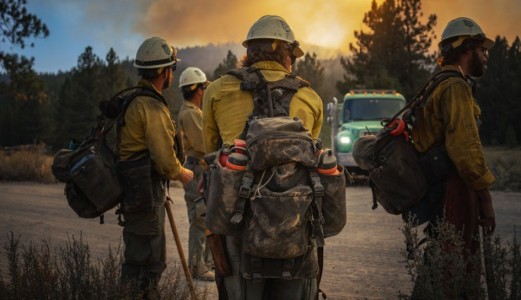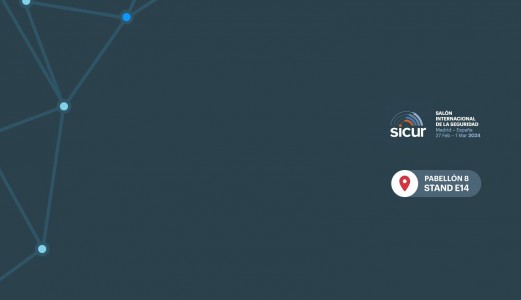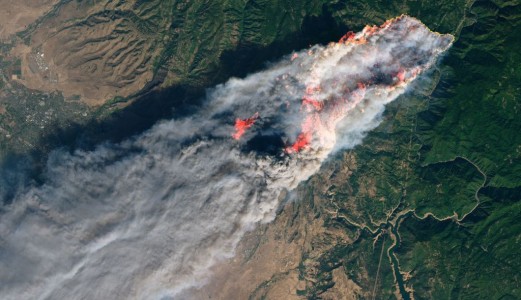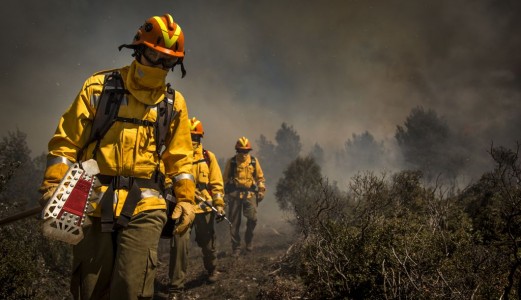The term “sixth generation fires” has been seen more and more often in the news in recent years. However, the concept of fire generations has been around for quite some time. Marta Miralles and Marc Castellnou presented this concept in 2005 as a tool for planning and adapting to fires with the new characteristics and new challenges they represent for firefighting units. At this point, it’s important to clarify that this classification came out of the Iberian Peninsula and, although each geographic area and firefighting unit has its own unique features, the essence of this differentiation corresponds to a reality reflecting the same challenges throughout the world.
This classification follows a chronological order linked to the anthropic evolution of the landscape. Let’s take a look at each one of these situations:
- 1st Generation: Fuel continuity
- 2nd Generation: High rate of spread
- 3rd Generation: High fireline intensity
- 4th Generation: Wildland-Urban Interface
- 5th Generation: Wildfire simultaneity
- 6th Generation: Extreme wildfire events
The first major challenge we faced was fuel continuity. With the rural exodus, fires no longer stopped due to discontinuity in the landscape and with the typical operations that had been sufficient up until then. Hose lines and hand tools were effective where work could be done; however, the ever longer and more extensive perimeters made it difficult to contain the entire perimeter quickly and safely. The response to this first generation was professionalizing firefighting units and creating anchoring infrastructures in the landscape to generate more opportunities.
Although we create infrastructures to compartmentalize the landscape, fires are becoming faster and more continuous. The rural exodus has turned many farming areas into forestry areas where scrub—a fuel comprised of fine, inflammable elements—speeds up fires, surpassing the capability of the initial attack. Moreover, protectionist policies have worsened the problem of fuel accumulation. With this second generation came the first surveillance systems and awareness campaigns, as well as attempts to reinforce the first attack in addition to equipping firefighting units with more resources.
Given the accumulation of fuel in our forests, they’re becoming more and more capable of launching spot fires sources at long distances and generating what are known as great wildfires. The third generation involves continuous, fast and intense fires that are capable of surpassing the extinguishing capacity. These events required more tactical planning as opposed to simply operations to take advantage of the weaknesses in the fire and find windows of opportunity. This led to the use of new tools and operations along with preliminary analyses of risk scenarios. The idea was to try to understand how a fire spreads in order to predict opportunities and that’s when the first standard fire classes came about. It is worth noting that, with this generation, work was done to re-introduce fire as a management element through prescribed burns.
Although up until now the problem was markedly rural in nature, great wildfires began occurring with the fourth generation within the urban forest interface. Fires became a civil protection problem and initiative was lost as responses became defensive without anticipation, focusing more on protecting the population. The main challenge lies in avoiding a collapse in the extinguishing system which is why the Incident Command System (ICS) is applied. Functional sectors were established in property developments and channels of information were improved so that only the information absolutely necessary for decision making is passed on.
All of this got complicated with the fifth generation of fires where all of the foregoing began occurring simultaneously. The scenarios are more and more dynamic with scales of landscape. What’s more, it’s not only a question of a rural exodus anymore as climate change now plays a relevant role. At this point, there had to be a move from tactical analysis to strategic scenarios and advance decision making when faced with a fire. Decision making had to become dynamic considering society’s values and the common good. The aim of fire management was to create resilient landscapes.
Finally, as people began re-adapting and taking measures against the challenges arising with these first generations in various places around the world, the sixth generation arose: mega-fires and fire storms invigorated by climate change which are capable of modifying the atmosphere on a large scale and creating their own conditions for extreme propagation. Science is not yet able to model and predict events with absolute accuracy, and managing the uncertainty and firefighter safety has become the priority. These fires require highly trained firefighting units to maintain situational awareness and avoid uncertain scenarios.
How must we adapt and what is the solution to the challenges that come with this new generation? Will firefighting units be prepared for upcoming events? There are many questions out there yet few effective solutions for now. One thing is obvious. We are observing extreme events and physical phenomena which we still do not understand and which pose a huge challenge for firefighting units and the scientific community.
Thanks to our partner, The Emergency Program, you’ll be able to take a free class with international experts to gain a deeper understanding of this complex issue of fire generations.
Don’t miss out on this opportunity!






